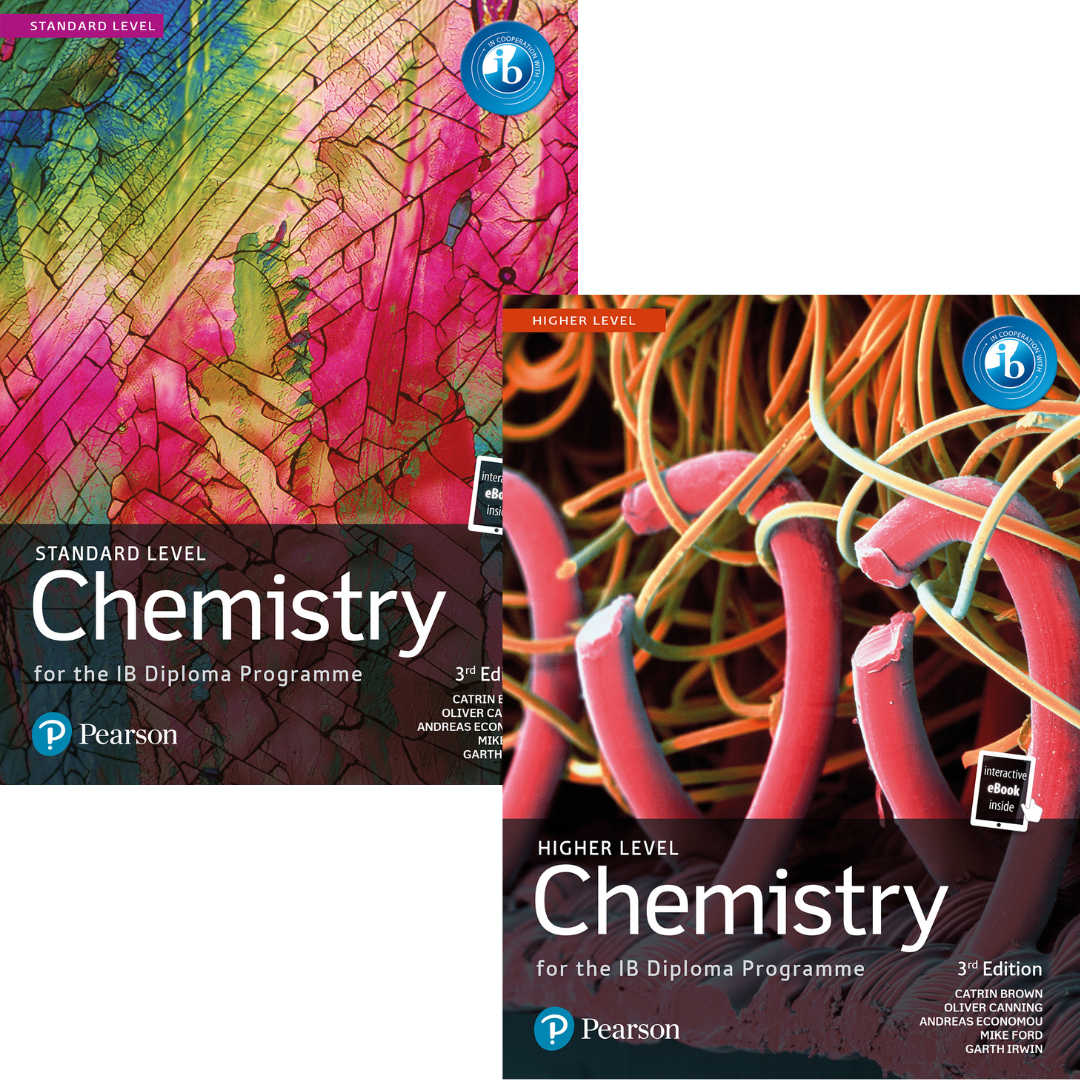
In this blog post, Catrin Brown, one of the authors of Pearson’s Chemistry for the IB Diploma Programme series, and contributor to the IB’s curriculum review team, talks about the changes to the DP chemistry subject guide for first assessment in 2025.
The review team that helped develop the new chemistry guide had the following major goals:
- to reduce the content of the course
- to develop a conceptual approach
- and to focus on the significance of patterns and trends
while maintaining the programme’s emphasis on experimental work, global relevance, and a rigorous approach to learning and assessment.
The more significant changes in the new guide are itemised here, with a consideration of how these changes reflect the goals set by the curriculum review team.
1. Removal of the Options
The removal of the Options is certainly a big contributor to the reduction in the content of the course. However, some topics from each of the former four Options are now included in the main syllabus – for example the bonding triangle (Option A), biofuels (Option B), fuel cells (Option C) and separation techniques (Option D). This is by no means an exhaustive list, but makes the point that all students will now be exposed to the applications and global context of chemistry in a range of fields. Content has been reduced in many other areas too, especially where it included data that is easily accessed and is now largely included in the IB data booklet.
This syllabus contains fewer specified examples of context than the 2016 syllabus, so that teachers should feel less constrained and more able to choose examples that suit their location and circumstance.
2. Introduction of two main themes
The syllabus content is now presented in two main themes, Structure and Reactivity. The interdependence of these two themes – what chemicals are made from and how they behave – is emphasized throughout: ‘Structure determines reactivity, which in turn transforms structure’. This is reinforced by the fact there is no expectation that the syllabus be taught in any particular order, or that any topic needs to be covered completely at one time. For example, a teacher may choose to introduce the mole concept in Structure 1.4 and then move on to its application in stoichiometry in Reactivity 2.1. Linking Questions (explained below) help stress the relationships between topics.
Emphasis is placed on the wide use of models in the study of chemistry, with consideration of their limitations and how they continue to evolve. Reaction mechanisms are classified as only four types, all of which are defined in terms of sub-atomic particle behaviour. At first glance this may give the impression that the syllabus has been drastically changed, but in fact, it is an elegant and stream-lined presentation that reinforces the concept of reactivity depending on structure.
The Nature of Science (NOS) continues to be an important thread that runs through the course (and through the biology and physics courses too). Some references are made to NOS in the syllabus, but mostly, teachers are encouraged to provide their own examples, such as by drawing on topical developments.
3. Guiding Questions
Guiding Questions are a new feature of the syllabus, given at the start of each sub-topic. The questions are purposefully open-ended, lending themselves to increasingly detailed consideration as the understanding of the topic deepens. These questions may serve as openers for a topic, teasing out students’ prior knowledge, and perhaps helping to suggest a sequence of what will be covered. They could also be used as a tool for assessment, looking for increasing depth and breadth at different stages in the learning. In topics where there are additional Understandings for the Higher Level course, HL students will be able to give a more in-depth answer at the end of the unit.
Guiding Questions should be re-visited at the end of each sub-topic as a useful tool for revision.
4. Linking Questions
Linking Questions are another important feature of the new course. They are given in many of the syllabus Understandings, where they show a link to a different but related sub-topic. The goal of Linking Questions is to help create networked understanding, including from Skills in the study of chemistry and with the NOS. They focus on the unifying concepts and patterns, sometimes including anomalies. They may also probe limitations of models and prompt consideration of the application of chemistry in a real-world context.
Linking Questions are unlikely to be used as questions in examinations per se, but the related concepts are considered an essential part of the course for assessment.
5. Introduction of skills in the study of chemistry
At the top of the ‘syllabus roadmap’ given at the start of the 2025 subject guide is a new section known as ‘Skills in the study of chemistry’. This is not intended as a topic to be taught in isolation, but is more of a checklist of skills that students must acquire during the course. It replaces the ‘prescribed practicals’, (aka ‘mandatory labs’) of the 2016 curriculum, and clarifies the techniques, technology and mathematical scope that is expected within the course. This approach gives more flexibility to teachers as to how and when they teach a specific skill. For example, carrying out distillation is an expected technique, but whether this is included as part of the oxidation of alcohols or while considering the separation of a mixture of liquids or anywhere else, is completely open to choice. The inquiry process is explicitly laid out as essential background for the Internal Assessment component of the course.
I hope teachers and students truly enjoy exploring this conceptual approach to the study of chemistry.
 Start your free trial
Start your free trial
Explore our complete course books for Standard Level and Higher Level Chemistry to see for yourself how they fully support you with delivering the new Subject Guides. Sign up for a free trial
Subscribe to our blog
If you’d like to stay up to date with our articles in 2023, why not subscribe to our blog? You’ll get a fortnightly roundup of the articles you’ve missed straight to your inbox, plus links to free teaching resources.

